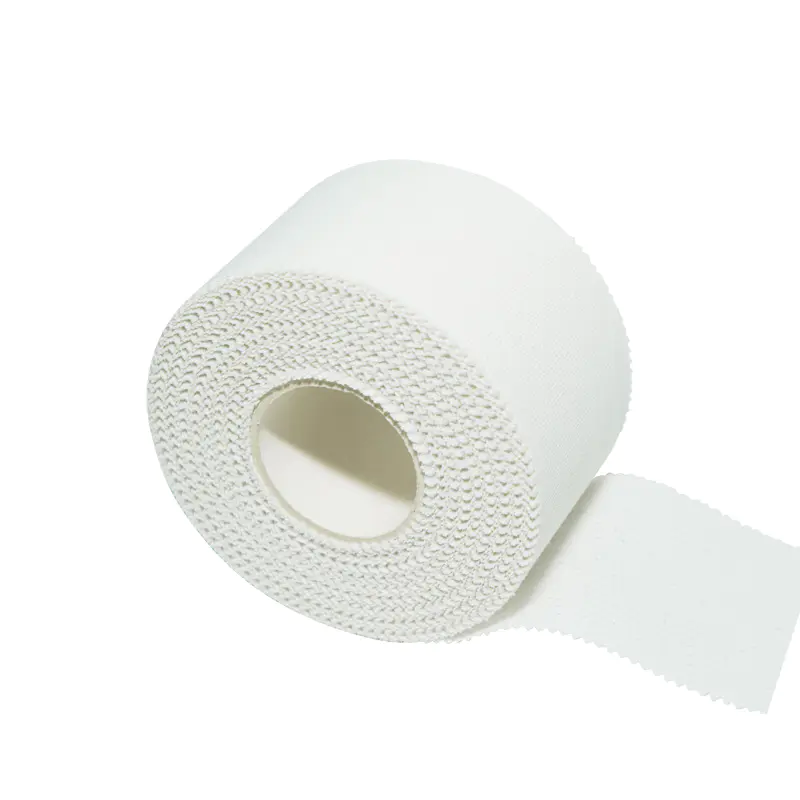An elastic bandage, often recognized by its stretchy fabric and familiar clips, is a versatile tool for providing support, compression, and stability to injured or strained body parts. Whether you’re dealing with a sprained ankle, a strained wrist, or simply need to reduce swelling, knowing how to properly apply an elastic bandage is crucial for effective recovery and preventing further injury. This guide will walk you through the essential steps and considerations for wrapping an elastic bandage correctly.
Understanding the Purpose of an Elastic Bandage
Before you begin wrapping, it’s helpful to understand why you’re using an elastic bandage. Its primary functions are:
- Compression: To reduce swelling and inflammation by applying gentle pressure to the affected area.
- Support: To stabilize joints or muscles, helping to prevent excessive movement that could exacerbate an injury.
- Protection: To offer a layer of physical protection to the injured site.
General Principles for Wrapping Any Body Part
While specific wrapping techniques vary by body part, several universal principles apply:
- Start Below the Injury: Always begin wrapping an elastic bandage at the point furthest from the heart (distal) relative to the injury, and work your way up. For instance, if your ankle is injured, start wrapping at the base of your toes. This helps promote blood flow back towards the heart and prevents blood from pooling below the bandage.
- Overlap by 50%: Each layer of the elastic bandage should overlap the previous layer by approximately 50%. This creates even compression and prevents gaps.
- Even and Consistent Tension: Apply the elastic bandage with consistent, firm tension, but never so tight that it causes discomfort, numbness, tingling, or discoloration. The goal is supportive compression, not tourniquet-like constriction.
- Smooth Application: Ensure the elastic bandage lies flat against the skin without wrinkles or folds, which can create pressure points.
- Check Circulation: After wrapping, always check the circulation below the bandage. Your toes or fingers should remain their normal color and warmth. You should be able to wiggle them easily. If you experience numbness, tingling, increased pain, throbbing, or a change in color (bluish or pale), the elastic bandage is too tight and should be re-wrapped immediately.

Step-by-Step Guide: How to Apply an Elastic Bandage
Let’s use a common scenario – wrapping an ankle – as an example to illustrate the technique.
-
Positioning: Have the person (or yourself) sit comfortably with the injured limb supported. For an ankle, the foot should be at a 90-degree angle to the leg.
-
Starting Point: Hold the roll of the elastic bandage in one hand, with the loose end ready to be applied. Start wrapping about 1-2 inches above the base of the toes, making two or three circular turns around the foot.
-
Figure-Eight Pattern:
- Once you’ve secured the initial wraps around the foot, bring the elastic bandage diagonally across the top of the foot and around the heel, creating a “figure-eight” pattern.
- Continue this figure-eight motion, moving slightly upwards with each pass. The elastic bandage should move from the arch of the foot, around the ankle bone, and then back across the top of the foot.
-
Ascending the Limb: Continue the figure-eight wraps, gradually moving up the calf, ensuring each new layer overlaps the previous one by about half. Maintain even tension throughout.
-
Finishing: Stop wrapping about 2-3 inches above the injured area. For an ankle sprain, this might be mid-calf. Ensure the elastic bandage covers the entire injured area and extends sufficiently above and below it for proper support.
-
Securing the Bandage: Use the metal clips provided with your elastic bandage to secure the end. If clips are unavailable or uncomfortable, medical tape can also be used. Avoid securing the bandage too tightly with the clips, as they can create pressure points.
-
Final Check: Re-check circulation immediately after securing the elastic bandage and periodically thereafter. Remember the signs of a too-tight bandage: numbness, tingling, increased pain, or color changes.
Specific Considerations for Different Body Parts:
- Wrist: Start at the base of the fingers, keeping the thumb free. Wrap around the hand and then in a figure-eight pattern around the wrist.
- Knee: Keep the knee slightly bent (about 15 degrees) while wrapping. Start above the calf and wrap upwards, covering the knee joint. Avoid wrapping directly behind the knee joint too tightly, as this can impede circulation.
- Elbow: Keep the elbow slightly bent. Start below the elbow and wrap upwards, covering the joint, similar to the knee.
When to Seek Professional Advice
While an elastic bandage is excellent for initial injury management and support, it’s not a substitute for professional medical advice. Consult a doctor or physical therapist if:
- You suspect a fracture or severe injury.
- Pain is severe or worsens after applying the bandage.
- Swelling persists or increases.
- You experience numbness, tingling, or weakness.
- The injury doesn’t improve within a few days.
Properly applied, an elastic bandage can significantly aid in recovery and provide comfort. By following these guidelines, you can ensure you’re using this essential first-aid item effectively and safely.








